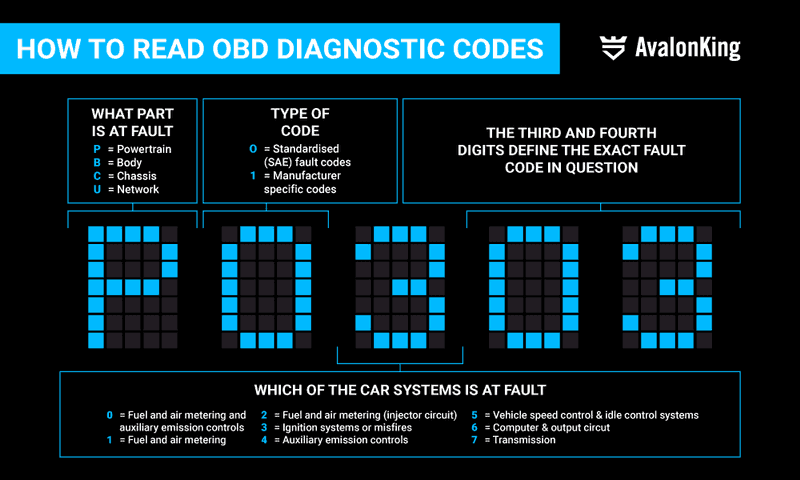The month of April is typically that turning point during the year we all anticipate. It’s when snow and ice melt, the weather begins to warm up, and show off your car season is officially underway. Keeping your daily driver or garage queen properly maintained is a sure-fire way to ensure it runs strong through those hot summer months.
This is completed by activating a strong and detailed spring cleaning and car maintenance program. However, it’s a statement of fact that all vehicles are unique, require different scheduled service and are in different levels of ‘readiness’.
Since this is the case, let’s provide a general overview of the top 5 items you should include in your springtime car maintenance checklist. Most of these items can be done at home, depending on your level of experience and comfort level – others will need a professional mechanic.
Tips for Spring Car Care
The spring season is unique for different regions across North America. Those living in northern states embrace April and May, as it means those long, cold winter months are quickly vanishing. It also introduces a peak period where car lovers get to show off their prized rides.

Those in southern states have the luxury of driving with their tops and windows rolled down most of the year. This introduces the biggest variable associated with springtime maintenance – location makes a huge difference. If you’ve been driving most of the year, it’s quite possible your maintenance schedule is more labor intense and spread evenly across the year.
That said, there are a few steps drivers should consider completing before completing their maintenance and hitting the road for extended trips when the weather starts to get nice.
Steps for Getting Your Car Ready for Spring Maintenance
In a perfect car care world, every car owner would schedule their jobs, hobbies, and social activities around trips to the dealership, tire shop, or getting their hands dirty changing fluids. But this is a pipe dream – and we all know it.
However, there are a few steps you should complete prior to making your maintenance checklist. If you follow these three simple tips, you’ll save a boat load of money, time, and ensure your ride is ready for the hot and humid summer months.
Download any OBD-II Trouble Codes
Contrary to popular belief, not all trouble codes illuminate the check engine light on your dashboard. If you’re not aware, today’s modern car is built with an on-board diagnostic computer (OBD) that receives vehicle data from a series of sensors placed throughout different vehicle systems.

The sensors simply relay data to the computer, which analyzes the information and determines if there is an inefficiency or problem. If an issue is detected, the On-Board Diagnostic computer will trigger an OBD-II trouble code. The code is stored in the computer and is downloaded with a digital scanner.
By downloading all trouble codes and determining what they mean (specific to your vehicle) you’ll have an idea of there are specific vehicle systems that might require extensive maintenance or repair. However, if you don’t take this proactive step, your car could breakdown – and that would just suck.
Check Your Factory-Backed Maintenance Recommendations
The second item to do before beginning springtime repairs or tune-ups is to check with your manufacturer – specifically the recommended maintenance intervals. Every moving part on your car has a scheduled replacement, whether it’s based on hours of service or miles driven.
When you check with them first, you’ll know if certain replacements are due before your busy summer driving season.
Pro Tip: Not sure what your scheduled maintenance is from your manufacturer? Well, this cool tool at YourMechanic.com makes looking it up easy.
Have Your Alignment Checked
Vehicle suspension systems typically fall out of alignment during winter. Not because it’s cold or due to reduced driving, but mainly due to potholes, hitting curbs, or other obstructions in the road.

However, having the suspension alignment checked as spring begins permits you to determine if you’ve got mechanical issues causing the problem, and the condition of your tires.
These simple tests might determine some major repairs and expensive service, but it’ll reduce the potential of mechanical breakdown or vehicle accidents due to broken parts.
Five Items to Add to Your Spring Car Maintenance List
While the three steps above will help you gain a big picture perspective about the overall condition of your ride, the items listed below are specific tasks that should be done as a proactive measure.
Most of these items can be completed at home, using general tools. However, if you don’t feel comfortable with any of these, always defer to the experience of a certified automotive technician.
Before we get into these MUST DO items, here is a list of recommended spring car care replacements:
- Windshield Wipers or Wiper Blades
- Replace Windshield
- Check Brake Fluid
- Charge or Inspect Air Conditioning
- Install your All-Season Tires (for those living in cold climates and run snow tires during winter)

Engine Oil and Filter Change
Most automotive manufacturers recommend changing the engine oil and filter every 5,000 to 7,500 miles. And while it’s impossible to estimate that your car, truck, or SUV is going to be due for an oil change when the Easter Bunny comes hopping to your home, it’s a smart idea to get it done before you take any longer road trip.
Engine oil that is clean and filled to recommended capacity helps to reduce carbon deposits on moving parts, keep them properly lubricated, and running cool. It also ensures that tuned-up powerplant operates at peak horsepower. Not that you’d press that go pedal further when the roads are dry, clear, and prime ass-hauling conditions.
Inspect Tires – Rotate and Rebalance
Hopefully you followed our advice above regarding having your suspension alignment checked. If you did, the technician likely told you that:
- Your tires are in great shape dude – well done, you are da man! OR…
- Your tires are worn on the inside, the outside, or both sides – you’re lame, and you need new shoes for your ride. (OK – most mechanics don’t say that – but it’s what they mean…)
However, the one thing that suspension dudes usually don’t check is the overall condition of the tire, such as the sidewall. The main item you need to do during springtime is check if your sidewall is showing signs of age – such as cracking or drying.
As the sun peaks out for longer hours, your black tires soak up those UV rays that cause excessive damage to the side wall. If the sidewall is already showing signs of damage, the likelihood of experiencing a side wall blowout increase significantly.
Tire damage is also more common in summer due to tire pressure expanding. In fact, for every 10 degrees of average temperature, the pressure will increase by at least one PSI.
With all that said, in spring, follow these tire-related guidelines.
- Check sidewalls for any dry aging or damage. If they are cracked or older than 5 years, replacement them.
- Take your ride to a reliable tire shop. Have a professional rotate the tires (if possible), re-balance them, and have them replace your old tire air with Nitrogen. It’s less susceptible to tire pressure variances based on outside temperature.
- Replace them if you have less than 3/32nds of an inch. While most professionals say you should replace tires at 2/32nds, the spring and summer season tends to increase the chances of excessive rain due to thunderstorms and monsoon rains. The more tread depth, the better traction on wet roads you’ll have.
Flush the Coolant System
Having your car overheat will put a serious dent in your pocketbook. In most cases, when a car’s engine overheats, it will cause the cylinder head gasket to burn, which can also damage the block or actual head. If it’s left unresolved, it’ll seriously destroy your engine.
Reduce this potential significantly by flushing your coolant system. Not just drain the radiator – I mean flush the whole system. There is a right and wrong way to do this – but, every vehicle is unique and has a different recommended procedure. So, either break down and buy a service manual for your ride or have a professional mechanic flush it for you.
*Here is a pro tip. IF you’re going to flush your coolant, make sure to follow recommended steps for filling or priming the coolant system correctly. Many newer vehicles must be primed correctly, or it’ll develop air bubbles inside the coolant system – usually in the heater core or engine block. If that happens, you’ll overheat the engine.
Timmah’s Pro Tips
Change Air Filters – All of Them
Most cars, trucks, and SUVs have a few different air filters. The main one we all know is the intake system. However, many people forget about the cabin air filter. Both these filters should be replaced before you start driving frequently in Spring.
The months of April and May introduce a lot of pollen and dust to the air our engines and we breathe. If the air intake filter is dirty before you start driving a lot in Spring, it’ll get clogged quicker, leading to poor engine performance, reduced fuel economy and lack of acceleration.
This also applies to your cabin filter. Remember, if you’ve got the AC on and windows rolled up, the cabin air filter is circulating that dirty air through – and you’re breathing that crap. So, be proactive and replace both air filter inside your vehicle, for your engine’s health and yours.
Detail Your Car
The winter season coats your car in a lot of road grime, including corrosive salts in cold weather climates. This can – and usually will accelerate corrosion, leading to rust. The final step in the springtime maintenance checklist is to completely detail your car.
Here are the items I’d recommend completing once the cold weather moves away.
High-pressure wash the undercarriage of your vehicle
If you don’t have a high-pressure water sprayer, head to a car wash with one, and take time to spray degreasing soap under the vehicle, your suspension, and under the fenders of your vehicle. You can rent one also. The key is to use a high-quality degreasing or contamination car wash. Let it soak for a few minutes, then spray off.
Hand wash the car with a decontamination car wash soap
If you don’t have a ceramic coating applied to your ride, follow up the high-pressure wash with a hand wash (two-bucket method) using the same decontamination car wash. This will help remove embedded debris, road grime and more from the clear coat, windows, and plastic trim.
Use an IPA Surface Prep Spray
After the car has been deep cleaned, use an isopropyl alcohol prep spray to remove any residual left over from the washing. This will prep the surface for the final step.
Protect your paint and vehicle surfaces
The final step in the detailing for spring is to apply a high-quality paint protection product – like a ceramic boost spray or nano ceramic coating. This will provide a thin, yet very hard layer of protection on the surface – which will enhance the gloss of paint, improve hydrophobic properties, and protect against UV exposure.












